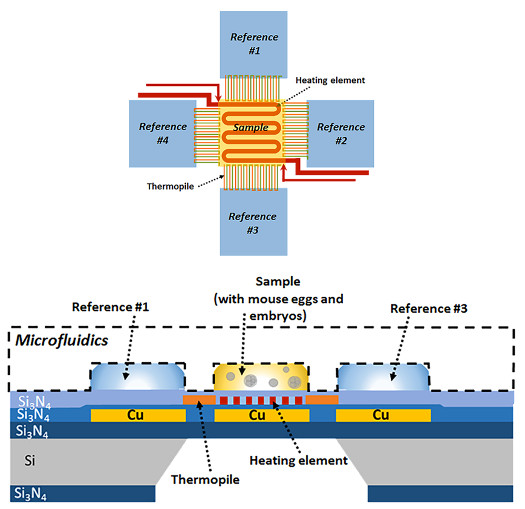Sensors for Cellular Bioenergetics
Integrating nanocalorimetry with microfluidics

Calorimeters have great potential as powerful biosensors, but enhancing their sensitivity and the handling of fluid samples have been critical challenges. This highly interdisciplinary seed project focuses on breaking through the current limitations to quantitatively measure cellular bioenergetics at the level of a single cell. The Needleman lab is optimizing in vivo fluorescence lifetime imaging microscopy (FLIM) to quantitatively measure the concentration and fraction bound to protein of NADH and FAD, giving a relatively direct characterization of ATP production. The Vlassak lab is developing a micromachined calorimeter integrated in a microfluidics system for the analysis of picoliter volumes of samples (shown above). The thermopile-based pico-calorimeter will be capable of detecting temperature changes as small as 10-6 K, corresponding to 100 pWatt of power. Combination of these two techniques will allow them to quantitatively measure energy production and consumption in a single cell in real time.
David A. Weitz (Physics and Applied Physics)
Harvard MRSEC (DMR-1420570)
